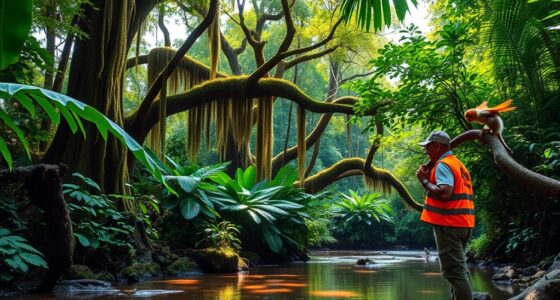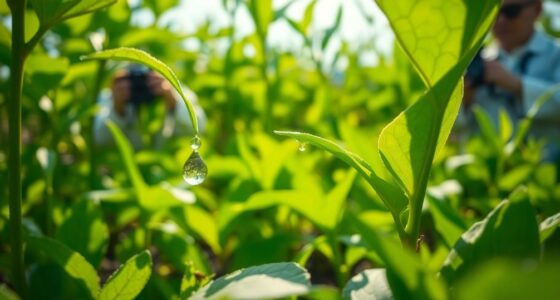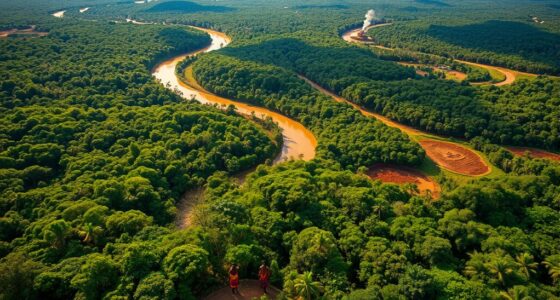By paying close attention to the birds visiting your backyard, you become part of a larger effort to protect species at risk. Your observations can reveal important patterns about migration, habitat changes, and threats that might otherwise go unnoticed. This collective knowledge not only informs scientists and policymakers but also empowers you to make a real difference. Discover how your simple acts of birdwatching contribute to meaningful conservation outcomes.
The Rise of Citizen Science in Ornithology
Have you ever wondered how everyday bird enthusiasts are transforming ornithology? The rise of citizen science has made it easier than ever to involve non-professionals in meaningful research. Thanks to smartphones, apps, and online platforms, you can now record bird sightings, upload data, and share observations with scientists worldwide.
This surge in participation has expanded the scope of bird studies, providing large datasets that were once impossible to gather. More people are recognizing their role in tracking bird populations, migration patterns, and behavior. Engaging in community-based conservation efforts through citizen science can also directly benefit local biodiversity and habitat preservation.
As a result, citizen science isn’t just a hobby anymore; it’s a vital component in modern ornithology. Your backyard birdwatching contributes valuable data, helping scientists understand and protect bird species across the globe.
How Backyard Birdwatching Contributes to Conservation Efforts
Backyard birdwatching plays a crucial role in conservation efforts by providing scientists with real-time data on bird populations and habitat use. When you observe and record which species visit your yard, you help create valuable datasets that reveal population trends and migration patterns. This information can identify declining species or shifts in habitat preferences, alerting conservationists to emerging threats. Your consistent observations contribute to long-term monitoring, enabling policymakers to make informed decisions about protecting critical habitats. Additionally, your efforts help raise awareness about local biodiversity and the importance of preserving native species. By participating in backyard birdwatching, you become an active partner in conservation, supporting scientific research that aims to safeguard birds and their habitats for future generations. Incorporating analyzed data from citizen science projects can further enhance the effectiveness of conservation strategies.
Tools and Apps That Make Bird Data Collection Easy
Thanks to modern technology, collecting bird data has become simpler and more accurate than ever. You can use various tools and apps designed specifically for birdwatchers. Apps like eBird and Merlin allow you to log sightings quickly, with built-in features to help identify birds and record details such as location and time. These platforms often include GPS tracking, making it easy to mark exact spots, and offer user-friendly interfaces that streamline data entry. Some apps even allow you to upload photos, which can be reviewed by experts for confirmation. Additionally, portable tools like binoculars with digital recording capabilities or lightweight sound recorders help capture bird calls, enhancing data accuracy. Implementing industry-recognition standards in these tools ensures your data collection remains reliable and trusted by the conservation community. These tools empower you to contribute valuable, reliable data effortlessly, supporting conservation efforts worldwide.
Identifying and Recording Bird Species Accurately
How can you ensure you’re accurately identifying and recording bird species? First, observe key features like size, shape, coloration, and markings. Use binoculars to get a close look, especially for distant birds. Listen carefully to their calls and songs, as these can be distinctive identifiers. Keep detailed notes or use a field guide or bird identification app to compare what you see with documented species. Take photos if possible; they can help with later verification. Record the date, time, location, and weather conditions, as these details improve accuracy. Utilize accurate identification techniques to distinguish similar species more effectively. Avoid rushing your observations—wait for clear, consistent cues. By paying attention to these details, you’ll improve your ability to identify birds correctly and contribute valuable, precise data to citizen science projects.
Analyzing Data: From Your Backyard to Scientific Discoveries
Have you ever wondered how your simple bird observations can contribute to scientific discoveries? When you record your sightings accurately, your data becomes part of a larger dataset used by scientists.
By organizing and submitting your observations through citizen science platforms, you help identify trends, migration patterns, and population changes. Researchers analyze this data to detect shifts in bird distributions or the emergence of new species.
Your detailed notes on bird behaviors and numbers provide crucial insights that might otherwise go unnoticed. As more people contribute, the collective data becomes robust, enabling scientists to make informed decisions about conservation efforts.
In addition, understanding how to monitor and adjust your observation methods can improve the quality of your data and its usefulness for researchers. Your backyard observations, when carefully analyzed and shared, can lead to breakthroughs that protect and preserve bird species worldwide.
Success Stories: Species Saved Through Community Involvement
Community involvement has played a pivotal role in saving numerous endangered species. Your backyard birdwatching has directly contributed to these successes.
For example, citizen scientists helped identify a declining population of the Eastern Bluebird, leading to targeted conservation efforts that boosted their numbers. In another case, volunteers monitoring the Bachman’s Warbler provided critical data that prompted habitat restoration, saving the species from extinction.
Your observations also supported the recovery of the Piping Plover, guiding protective measures along vulnerable beaches. These stories show that collective effort matters. Additionally, the use of natural elements in habitat restoration has proven effective in supporting various species’ recovery.
Getting Started: Tips for Beginner Birdwatchers
Getting started with birdwatching is a rewarding way to contribute to conservation efforts and deepen your connection with nature. Begin by choosing a simple field guide or download a bird identification app to help you recognize local species.
Start in your backyard or nearby parks, observing quietly and noting the birds’ size, color, and behaviors. Bring binoculars for a closer look, and keep a journal or use a birding app to record your sightings.
Learn common bird calls and songs to boost your identification skills. Be patient and persistent—bird activity varies throughout the day and seasons.
Join local birdwatching groups or online communities for tips and encouragement. Most importantly, enjoy the experience and celebrate every new bird you spot. Incorporating aesthetic enhancements such as natural elements and proper lighting can make your birdwatching space more inviting and enjoyable.
The Future of Bird Conservation With Citizen Participation
Citizen participation is shaping the future of bird conservation by empowering individuals to contribute meaningful data and support scientific research. As more people get involved, large-scale monitoring becomes possible, filling gaps that professional efforts alone can’t cover.
Technology plays a key role, with apps and online platforms making it easier to record sightings and share information instantly. This collective effort helps scientists track bird populations, identify threats, and develop targeted conservation strategies.
In the future, your backyard observations could influence policy decisions and habitat protection plans. As citizen scientists, you’ll continue to be essential partners in safeguarding bird species.
Your dedication and data help create a more accurate, comprehensive picture of avian health worldwide, ensuring better conservation outcomes for generations to come.
Conclusion
By participating in backyard birdwatching, you’re making a real difference. Your observations help scientists track bird populations and spot threats early. With simple tools and a keen eye, you contribute valuable data that can lead to meaningful conservation actions. Every sighting counts, and your involvement fosters community and awareness. Keep watching, recording, and sharing—your efforts are vital in protecting bird species now and for future generations.







